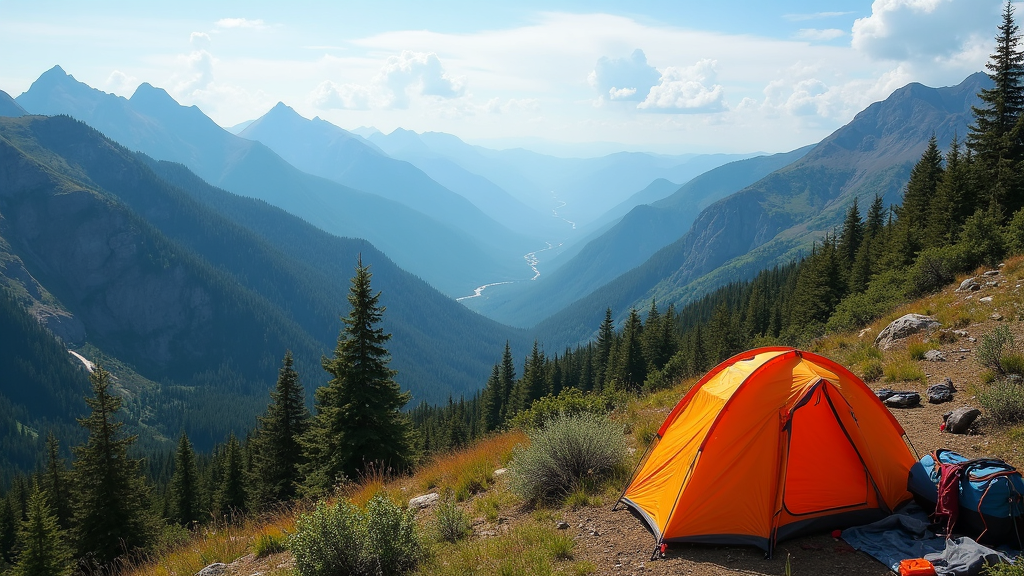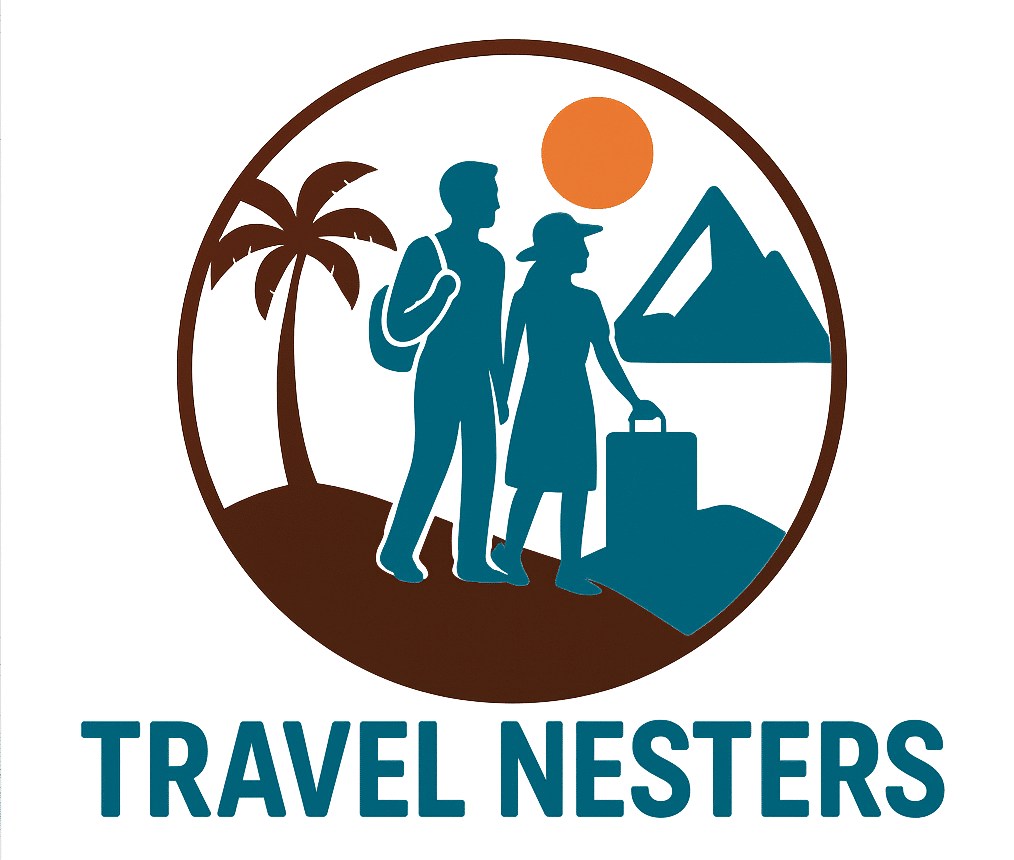Adventure travel may seem like it’s just for the young or those with no commitments, but when your kids head off on their own, there’s a whole new world of possibilities. With fewer family obligations and more time to work with, planning some long-overdue dream trips feels totally doable. The secret is setting up your budget so these adventures are fun, sustainable, and worry-free. I’ll guide you through how to master adventure travel budgeting as an empty nester, offering practical advice, handy options, and a dash of personal experience—so you can plan awe-inspiring adventures without draining your savings.

Why Adventure Travel After Kids Is So Appealing
Once children have moved out, the thrill of adventure travel becomes especially enticing. You gain a level of freedom and possibility; spare rooms appear in your house and your calendar, letting you finally focus on experiences you may have postponed for years. No more working around school calendars or youth sporting events! With this flexibility, you can score off-peak travel deals, enjoy longer trips, or reach far-flung spots off the beaten path.
Adventure travel takes many forms. For some, it’s hiking, kayaking, camping, or scanning the horizon for wildlife. For others, it means soaking up new cultures on your own schedule. Whatever your preferred pace, planning your finances for these kinds of trips calls for a slightly different game plan than your classic family vacation or last-minute weekend escape.
How to Set a Realistic Adventure Travel Budget
Having a clear budget is the best way to make your travel goals a reality and dodge any nasty surprises. Start by picturing the adventures you crave, how often you’d like to get out there, and what fits comfortably within your current and future finances.
- Research That Fits You: Skip the vague averages. Look up recent costs using travel blogs, firsthand trip reviews, or forums focused on the 50+ crowd. This will help you spot realistic prices for flights, stays, tours, and adventure gear.
- Sort Your Dream List and Must-Haves: It pays to list out what matters most. Hiking in Patagonia may be a must; splurging on a luxury resort, not so much. Decide what you can’t skip and what can be cut or found cheaper.
- Build in a Safety Cushion: Adventure travel hides plenty of unexpected costs—think permits, extra gear, or insurance. Setting aside another 10-20% for curveballs will help keep you worry-free.
Typical Adventure Travel Costs You Can Expect
It’s crucial to get a realistic sense of what you’ll spend to keep adventures in check. Your budget can swing a lot, depending on where you roam and how you like to travel. Here’s a handy breakdown to bear in mind:
- Transportation: From flights and rental cars to shuttles or trains, getting to remote places might mean steeper transport expenses or tricky logistics.
- Accommodations: Stay anywhere from cozy guesthouses and eco-lodges to campgrounds or cool, unusual lodging options.
- Guides and Tours: Paying for guided hikes, adventure excursions (rafting, safaris), and local expertise can be a smart way to add depth and safety. Sometimes, a guide is truly worth it for their know-how.
- Activities & Permits: Always check for required park entry fees, hiking permits, or gear rental ahead of time. Don’t get caught short at the wicket!
- Gear: Good boots, weatherproof clothes, backpacks, and a couple of eye-catching gadgets are your foundation. Save by renting or borrowing specialty gear until you know you’ll use it more than once.
- Travel Insurance: This is especially vital for adventure trips. Look for plans that include emergency rescues and trip interruptions, so you’re set in rugged conditions.
- Food & Drink: Budget for meals out, trail snacks, and the occasional indulgence. You deserve some treats along the way!
Planning and Saving Strategies
Getting the most for your travel buck usually comes from dozens of little tweaks. When added up, they make a big impact on how much you get to travel and what you can experience each trip:
- Travel Off-Season: Going during “shoulder seasons” (early spring or late fall) often means lower prices, fewer crowds, and better availability for prime adventure sites.
- Use Points and Rewards: Make the most of travel reward points to cover flights or accommodatons. Check what you have saved up—you might be pleasantly surprised.
- Book Early or Last Minute: For big-ticket overseas trips, early-bird specials pay off. For local or less hyped spots, watch for last-minute bargains on travel sites.
- Embrace Slow Travel: Spend more time in one place to cut transportation costs, soak in the atmosphere, and truly get to know a region.
- DIY or Guided Adventures: Sometimes planning your route, booking trains, and handling logistics solo saves big. In other cases, group rates with guides can unlock safety, efficiency, and cool experiences for less.
- Travel with a Purpose: Volunteer trips, wildlife cleanups, or trail-building experiences can sometimes save you money or provide unique memories, all while giving back.
Common Questions and Concerns About Adventure Budgeting
Lots of people reach out to me after becoming empty nesters, curious about how to master travel without breaking the bank. Here’s a handful of the most repeated concerns, with some thoughts to mull over:
What if emergencies happen while I’m away?
Flexibility is your friend. Choose adventures that allow for a quick return or buy refundable tickets and flexible insurance. Remote adventure destinations sometimes lack cell service, so always share your itinerary and check in regularly with family.
What about pricey adventure gear?
Start small—good boots, basic layers, and a sturdy backpack cover most basics. Rent or borrow niche items, like climbing harnesses or kayaks, to test out if you’ll actually use them long-term. No reason to go brand-new across the board.
Is group travel right for solo empty nesters?
Going with a group helps with safety, socializing, and simplifying logistics. Opt for tours made for active adults or 50+ travelers, where you’ll cross paths with similar folks and move at a pace that suits you.
Potential Challenges and How to Handle Them
No budget is foolproof. Adventure travel, with its built-in unpredictability, comes with a few unique curveballs, but you can sidestep most with a little foresight:
- Unexpected Costs: Weather changes, airline hiccups, or a sudden trip home can drive extra nights of lodging or missed connections. Set up an emergency fund—a savings account that’s easy to dip into if needed.
- Gear Glitches: Luggage gets lost or stuff breaks. Bring only what you can stand to lose. Keep jewelry and irreplaceable valuables at home, safe and sound.
- Health Considerations: Some trips require a certain fitness level or steady medication. Get a checkup and talk to your doctor about any unique requirements or vaccinations before you book.
- Communication Issues: In remote areas or foreign-language locations, offline maps and translation apps can be lifesavers. Jot down important phrases and have emergency contacts ready.
Unexpected Costs
It’s easy to forget about rising park fees, tipping drivers, or fixing broken gear. To avoid getting blindsided, I always check traveler forums before I leave—recent travelers are often first to report price hikes or new fees. That advance warning can be a real money-saver.
Staying Healthy and Insured
Mishaps can happen: a sprained ankle, upset stomach, or a pair of misplaced glasses. Adventure insurance policies, especially ones covering remote or challenging destinations, are a must. Pack paper copies of ID and emergency details—having backups makes it easier if your phone runs out mid-hike.
Sticking to Your Budget
Impulse upgrades or tempting tour add-ons can quickly push spending over the edge. Keeping a digital trip ledger, like a basic phone note or spreadsheet, helps track where the money is going. Overspent a day or two? Adjust your next meals or activities to get back on track.
Cool Adventure Destinations for Empty Nesters
Choosing the right adventure is deeply personal, but some places have built a reputation for being affordable, memorable, and totally wow-worthy for travelers over 50. Check out these possibilities:
- National Parks: Think Yellowstone, Banff, or Torres del Paine—offering amazing landscapes and wildlife viewing at reasonable costs.
- Iceland’s Ring Road: Take a road trip on the famous loop, stopping at volcanic hikes, powerful waterfalls, and cozy hot springs. It’s self-paced and locally driven.
- The Camino de Santiago: One-of-a-kind walking adventure across Spain, with budget hostels, baggage transfer options, and a community vibe that sticks with you long after you return.
- Southeast Asia: Whether it’s exploring remote jungle temples or island hopping, this region gives you tons of value for extended trips packed with new experiences.
Budget-Friendly Tips for Staying Adventurous Long-Term
Adventure travel isn’t just a one-off thrill—it’s a lifestyle that can color every part of this next chapter. Want to stay on the move without busting your budget? Here are some winning ideas:
- Buddy Up: Travel with friends to save. Split accommodations, rental cars, and even groceries for major cost cuts and good company.
- Your Health Is Wealth: Regular physical activity and yearly doctor checkups help keep your travels fun, not stressful.
- Be Flexible: Adjusting dates or locations can nab you the best deals. If weather or prices change, don’t be afraid to reroute.
- Keep Up with Trends: New travel apps, gear, and meet-up groups are popping up all the time. Subscribe to email newsletters, join local hiking clubs, or even volunteer. It keeps the ideas fresh and connections strong.
Wrapping up, tackling adventure travel as an empty nester can be as smooth or as ambitious as you like. Spotting smart ways to budget and stretching your dollars helps you enjoy more trips, gather more memories, and set your own pace for this awesome new chapter. Plan ahead, stay open to surprises, and get ready to track down adventures that make you feel more alive than ever before.
